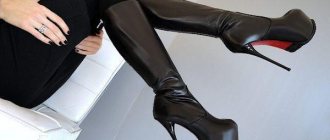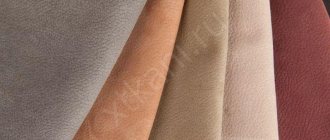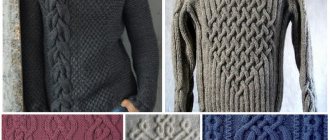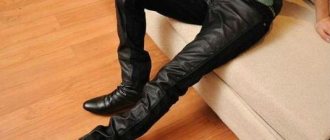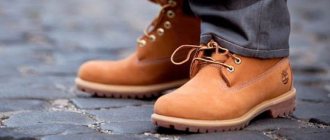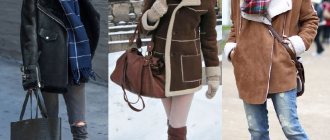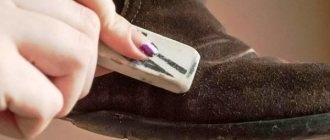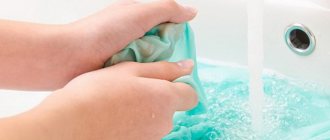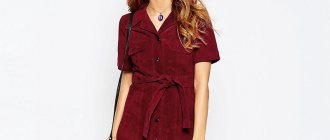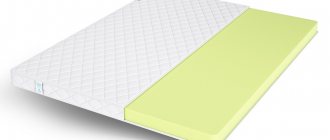Nubuck shoes appeared on the market relatively recently. This material has gained great popularity among both girls and boys. The main advantage is appearance. Even the most homely couple looks attractive. Manufacturers create a wide selection: from summer shoes to winter boots with thick soles. In terms of strength, nubuck is not inferior to expensive analogues. If you choose boots or shoes made from it, you need to know several rules for their care, since the material is demanding in this regard.
Features and types of material
The technology for making nubuck is quite new and involves mechanical grinding of animal skin with fine-grained abrasives. Raw materials processed in this way acquire a velvety appearance. In addition, the skin becomes durable, capable of withstanding significant mechanical load. The material quickly gained popularity, becoming a worthy competitor to expensive leather. Against the backdrop of its widespread use, the questions of how to care for nubuck and how long such shoes last have become relevant. To find the right answers, you need to compare the features of the natural materials used to make shoes.
| Features and Properties | Leather | Suede | Nubuck |
| What are they made from? | Mainly taken from cattle skin | Made from small animal skins | From cattle hides |
| Strength, wear resistance | Durable, lasts a long time, but over time creases form, which give the shoes a worn look. | Elastic, but thin, afraid of moisture, and if not properly cared for, quickly loses its appearance | More durable than suede and has good thermal insulation |
| Water resistance | Waterproof, when choosing winter shoes, this material is most often chosen | Easily gets wet and stretches, so it is used mainly in dry weather | More resistant to moisture than suede, but still absorbs it, losing its attractive appearance, so is more suitable for dry weather |
| Breathability | Does not create a greenhouse effect, absorbs excess moisture from the inside | Ensures normal air circulation, retaining heat | Denser than suede, but generally more hygroscopic, breathable material |
| Appearance and care | Looks solid, easily acquires a neat appearance with the help of special creams | It looks soft and velvety, wears off over time, and then begins to shine. Needs protection from moisture and regular maintenance | It looks velvety; when wet and then dried, it can become covered with white streaks. Needs special care products for nubuck shoes |
Shoes made of nubuck look original due to their high velvety feel, while the material is quite dense. Unlike leather and suede products, it has a light structure, which means there is less stress on the feet. Products made from these raw materials last longer, are more reliable and durable. Commercially available impregnation for nubuck allows you to protect shoes from moisture without losing their appearance. It is not surprising that manufacturers are constantly expanding their new collections with models made from practical raw materials and experimenting with its varieties.
One of the variations of the natural material is nubuck-oil or oiled nubuck, which is impregnated with water-repellent protective agents during the manufacturing process. It is heavier than usual, but is suitable for winter and autumn shoes, when rain and slush can very quickly give way to dry weather. It is easier to care for impregnated nubuck than regular nubuck.
By analogy with natural material, a substitute was developed that is almost impossible to distinguish by appearance. Artificial nubuck is more moisture resistant, but at the same time denser. Despite its attractive appearance, it does not absorb moisture well from the inside, and accordingly, the foot sweats more.
Nubuck-oilTo know for sure whether the shoes are made from natural or artificial nubuck, you should pay attention to the label that is present on the boots of global manufacturers. Natural material is accompanied by a pictogram of stretched skin, while artificial material is usually marked with a diamond.
Artificial nubuck
Flaws
Before purchasing a nubuck model, you should know the disadvantages of this product in order to make the right choice. Perhaps the buyer will change his mind about choosing an item when he learns some of the features of this material.
Intolerance to high humidity
The packaging of many models contains information about water-repellent properties. However, this is not entirely true. The structure, without special treatment, quickly collapses and the shape of the product changes. Therefore, these models require regular treatment with a water-repellent spray. This is especially true for products intended to be worn in autumn and winter. For the same reason, you cannot clean shoes under water; only dry treatment is suitable, but it takes a lot of time and is not always effective (marks and stains remain). However, now there are already processed models on the market. This information needs to be clarified with the store clerks.
Expensive and time-consuming care
Nubuck is a very easily soiled material . Sometimes you have to clean your shoes after going outside once. The owner of the model will have to spend a lot of money to maintain the shoes in a presentable form. For such material you need a spray, cream, and a soft sponge (a hard one can ruin the appearance). Not everyone is able to spend a lot of money on care.
Impracticality
This material is unlikely to be suitable for daily walks. It gets dirty quickly , and some contaminants are deeply absorbed into the structure so that they cannot be removed, or you will have to take the boots to a professional company, which can be expensive. The color also fades over time. The reason for this is regular cleaning. The fibers deteriorate, making the appearance of the model less beautiful. The best solution would be to choose products for evening meetings or holidays. Nubuck is not a suitable material for those who like practical shoes and daily walks.
Rubbing
After long walks, the owner may develop calluses, even if he is wearing socks, footwear or tights. This applies to most materials, but nubuck does not tolerate emollient oils that combat the problem of chafing on the legs and feet. Their use may damage the material.
Types of boots
Because nubuck has proven itself so well, manufacturers have begun to use it for a wide variety of shoe styles. Depending on the time of year and style, the density of the material, the degree of insulation of the product, the height and shape of the sole vary.
By season
Insulated winter boots made of nubuck are the best choice for dry, frosty days. They are distinguished by a rather high sole, but a relatively low heel, since the shoes must be stable and not slip in icy conditions. A fur lining must be present. It is better that it be natural, since the faux fur liner quickly loses its heat-protective properties and gets knocked down. Faux nubuck boots can also have a natural lining. If they are to be worn in a region where winter temperatures often drop below -10 °C, such insulation is a must, otherwise there is a risk of frostbite.
Nowadays, a variety of winter shoes made of nubuck are in fashion: from classic versions with a zipper to sporty chukka models with laces. Spring-autumn nubuck boots are a lightweight option suitable for warmer weather. For such models, a faux fur lining is quite suitable if the spring or autumn temperature does not drop below -5 ˚С.
Restoring nubuck boots after they have been exposed to rain is a tedious task, so it is best to wear such shoes in dry weather. If the region has a lot of rainfall, you should pay attention to a combined combination of materials, where the toe and back are made of waterproof raw materials. The quality of tailoring also matters.
In any shoe, it is most often not the material itself that allows moisture to pass through, but the seams and joints between the upper and the sole. Stitched winter boots are considered the most reliable.
Winter
Demi-season
By type of sole and heel
The sole is also of no small importance, since the safety of the upper part of the shoe directly depends on its quality. If you walk through snowdrifts in winter in low-heeled boots, then, most likely, the tops will get wet, since light weight snow tends to get on socks with heels. Therefore, high soles are not only a fashion trend, but also a mandatory attribute of nubuck winter boots.
In general, products are classified according to the following types of soles:
- at low speed - usually used for making light autumn-spring shoes;
- Winter and road models are made on tractor soles, as they do not slip;
- Women's autumn boots and closed shoes made of nubuck are produced with high heels;
- low heels are usually found in lightweight men's shoes and loafers;
- on the platform there can be either light shoes or nubuck boots, depending on the style.
You should study in advance how to care for nubuck shoes so that they last longer and maintain their appearance.
At low speed
With tractor sole and low heel
High heels
On the platform
Disadvantages of nubuck shoes
Unfortunately, in addition to all the advantages, there are also its disadvantages. First of all, nubuck itself, as a material, does not tolerate moisture at all . Therefore, walking in it on lawns or on a rainy day would not be the best idea. Because as a result, recently purchased shoes or boots will quickly lose their original appeal.
Flaws:
- nubuck can rub your feet, creating discomfort;
- does not tolerate aggressive external environments (water, dirt, frost);
- no stronger than leather.
Popular brands
Nubuck is a relatively new material, so there are many myths about its disadvantages. Most often, negative opinions arise due to the purchase of low-quality fakes or ignorance of how to care for nubuck shoes. That is why it is better to form an objective opinion regarding such models using high-quality branded shoes. Many brands are engaged in the production of nubuck products, whose shoes have received great recognition in the fashion world. The list of such brands is large, here are just a few of the most popular manufacturers:
- Shoiberg. A German company that works with natural materials specializes in the manufacture of high-quality shoes with orthopedic features.
- Timberland. American company specializing in hiking shoes. Quality and ease of everyday use are of primary importance. Thanks to injection molding, the brand's shoes are practically waterproof.
- Lab Milano. An Italian manufacturer whose priority is modern design, as well as attention to detail. The shoes of this brand are decorated with various decorative elements, which creates a handmade effect.
- Mario Ponti. A domestic brand, shoes combine high quality and affordable prices. Nubuck boots from this brand look impressive and elegant.
- Patrol. A domestic manufacturer that has chosen the production of road and sports products as its focus. Women's nubuck shoes fit perfectly on the foot, support the foot well, and look stylish and modern.
Separately, we can highlight the red nubuck Seto boots, which received their name in honor of the Japanese town where they are produced. In China and Japan, they are now incredibly popular, so they have become the signature style card of modern youth.
Large manufacturers, along with boots, also produce care products for nubuck shoes, developed specifically for their products.
Shoiberg
Timberland
Lab Milano
Mario Ponti
Patrol
Seto
What to wear with
Nubuck boots are sewn using the same principles as other leather shoes. Although modern couturiers are actively experimenting with eclecticism, there are generally accepted standards for what and how to wear shoes of a particular style. Sports boots go well with jeans and pants, but you shouldn’t always wear them with a skirt or dress. Bold sets look original on teenagers, since the urban style of teenagers allows for a casual look. In adulthood, you will have to more carefully select clothes that match your shoes in style:
- Mini, midi, maxi skirts of various cuts are perfect for boots with heels. Sets with a shirt and a classic coat will organically fit into the office style.
- Low-heeled shoes can be complemented with skinny jeans, a T-shirt, a thick knit cardigan, a leather jacket or a parka.
- A hoodie dress or sports model, as well as a unisex coat, go well with casual walking boots. It is worth remembering that shoes that are too massive can ruin and make your look heavier.
Men's fashion is more universal, but also conservative at the same time. Dress boots should not be worn with sweatpants, and tall models are not suitable for a business suit. A certain compromise can be achieved by wearing a fitted jacket, classic jeans in combination with lace-up nubuck boots. This style is quite acceptable in the office.
Storage
Finally, a few storage tips:
- Before putting your shoes in the closet, you should thoroughly clean and dry them at room temperature, and remove the insoles.
- To prevent microorganisms from multiplying in natural nubuck boots during storage, they should be treated with a disinfectant (Chlorkegsidin, Miramistin).
- Place the boots in a spacious box with holes for ventilation; if there are none, make your own.
- Do not place shoes in plastic bags; they may become damaged or become moldy.
Care Tips
Manufacturers offer a variety of care products:
- sprays;
- impregnation;
- foam;
- brushes.
In case of color loss, you can even paint the boots with special aerosols. However, these products are expensive, so experienced users have techniques in their arsenal that make restoring nubuck shoes at home a time-consuming, but very real procedure:
- Shoes that are wet and covered with white stains should be held over steam for 1 minute, then dried and gently smoothed with a soft brush - this will restore color and velvety.
- Greasy or contaminated areas on shoes can be restored to their previous appearance using semolina, talcum powder or starch. It is necessary to apply the powder to the surface of the product, gently rubbing it in, then leave for a couple of hours. Afterwards, carefully brush off and repeat the procedure several times if necessary.
- In order to stretch nubuck shoes, simply stuff the shoes tightly with damp newspapers and leave them overnight. If you need to increase the volume of a pair by less than a size, you can use a special stretcher.
- Even caring for artificial nubuck does not involve washing it - water can make shoes hard and quickly damage them. If necessary, carefully treat the contaminated areas with a slightly moistened cotton swab.
To protect shoes from water, there is a special impregnation for nubuck that will create a water-repellent layer without affecting the appearance of the shoes. It’s worth talking about the durability of a particular model when you regularly take care of nubuck shoes at home. How well the product will look after a few months of use depends on how well it is done.
Avoid contact with water
Use dry clean only
Remove stains with semolina or starch
